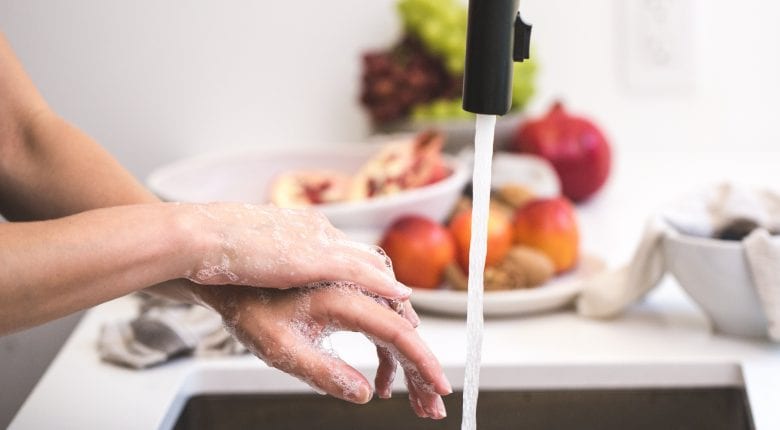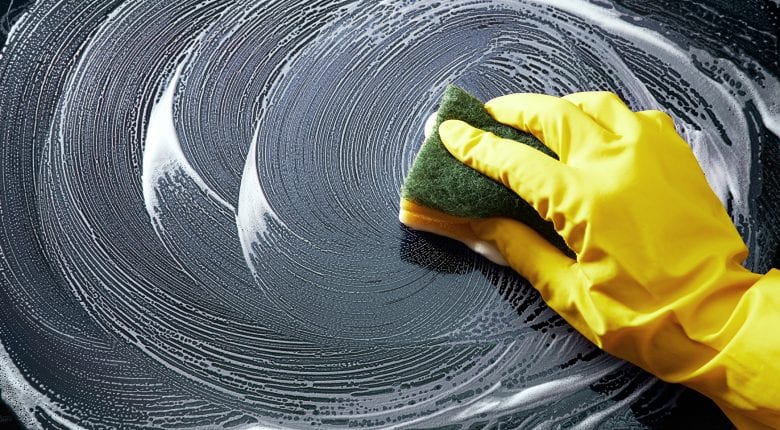Bacteria and viruses are our constant companions. The good news is that, with a few simple, hygienic practices, we can take care of our health and the quality and shelf life of our food. Learn important tips on hygiene in the kitchen right here on how to prepare and preserve healthy and delicious food!

Pathogens, such as bacteria, fungi or viruses can be found on our food, in refrigerators and on kitchen work surfaces. These can result in food poisoning or foodborne infections. Food poisoning occurs when germs in food produce toxins, which are then absorbed into the body when the affected food is ingested. In foodborne infections on the other hand, it is the germs itself that is ingested and causes harm.
Halting reproduction: Thanks to the refrigerator
Our refrigerator is a clever aid to protect ourselves against food poisoning and infections. Food not only stays fresher for longer, but most is also protected from unwanted co-inhabitants in the form of infectious germs. The reason for this is that Bacteria and fungi need favourable living conditions in order to multiply. Under unfavourable conditions, such as low temperatures, they struggle to multiply. Cold does not kill the little enemies, but it does inhibit their growth. As the infectious dose is decisive in the development of an infection, this is very important.
In order to reliably kill or inactivate germs we need heat. Germs cannot withstand temperatures of 70-80°C. So, cooling slows the germs’ growth and their production of toxins, heat makes germs harmless. However, even at low refrigerator temperatures, some bacteria continue to multiply. The only way to slow these hardy germs is with extreme cold, for example the freezer. Bacteria and fungi are primarily responsible for the spoilage of food. This also explains the long shelf life of frozen food. Other factors, as well as cold, also inhibit the reproduction of bacteria. An acidic pH value or a low water content also usually inhibits the growth and reproduction of germs. This is why some foods are more perishable than others.
Good care for great performance: Refrigerator hygiene
The place where food is stored for a long time deserves special care! Therefore, regularly clean your refrigerator with a mild cleaning agent. More tips can be found in this article. Additionally, food needs to be stored in airtight containers. This also aids refrigerator hygiene. In order to avoid raising the temperature in the refrigerator, only food that has cooled should be put in the refrigerator. Pre-cooked food must be cooled down quickly, as cool temperatures are known to inhibit the reproduction of germs. The following trick can help here: Place the leftovers in a bowl of cold water and ice cubes for a few minutes. Afterwards the meal is ready for the refrigerator or freezer.

Hands, work surfaces, utensils: Tips for a clean kitchen
During preparation, we can do a lot to protect our food and ultimately our body from germs. Usually, we ourselves transmit germs to our food and then ingest them into our bodies. A certain bacterial load in our body is completely healthy and natural. It is well known that coughing, sneezing or open wounds transmit germs. But even without illness, hands or clothing can transmit germs to our food. Therefore, a simple rule of conduct before preparing food is: Wash your hands! Remove jewelry and cover wounds with a waterproof plaster or rubber gloves. You can also improve hygiene in the kitchen by washing your hands during preparation is also sensible if you have come into contact with raw meat or fish, or unwashed fruit and vegetables.
Keep work surfaces and equipment clean in the same way you keep your hands clean. Incidentally, no strong detergent or disinfectant is needed to keep the kitchen clean. These do more harm than good. Washing-up liquid, all-purpose cleaner and possibly a scouring agent are perfectly adequate. Wipe kitchen worktops regularly. The following applies during preparation: Surfaces and utensils that have come into contact with raw or unwashed food should not then come into contact with cooked or washed food.
For a healthy atmosphere in the room, make sure to empty your rubbish bins promptly. Rubbish bins should also be thoroughly cleaned every now and then. Some things in your kitchen also require regular replacement. Although dishcloths can be washed a few times in a boil wash cycle at a minimum of 60°C, they should be replaced from time to time, just like sponges and brushes.
Healthy food for a resilient body
As important as hygiene in the kitchen is for the reduced ingestion of germs, the body’s own defence system always plays a major role in preventing infections. Immunity against infectious germs can be increased by a healthy, balanced diet, among other things. Read our own article on immunity boosting food and get inspired by diverse sorts of fresh fruit and vegetables!
#TipsandTricks #Hygiene #Foodhygiene #Kitchenhygiene #Refrigeratorhygiene #Bacteria #Viruses #Germ #Cooling #Proliferation #Cleaning #Health #refrigeratorhygiene